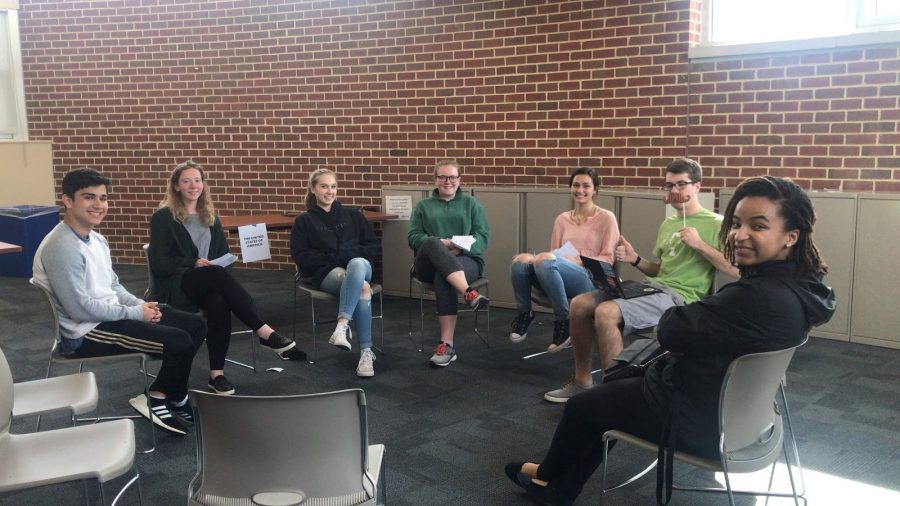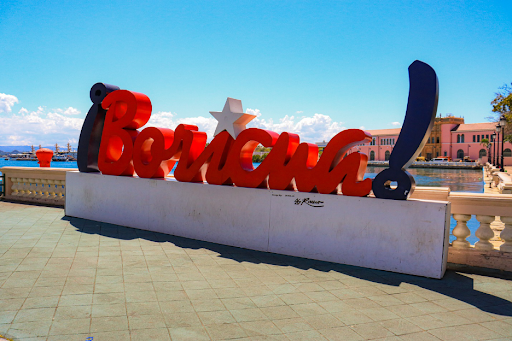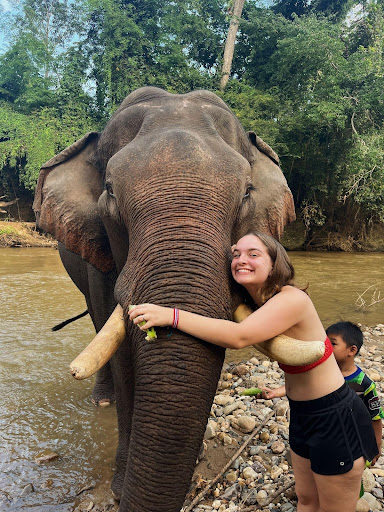On Friday, March 29, the Loyola Maryland Kino Border Initiative (KBI), an immersion program offering participants the chance to speak with migrants at the Arizona-Mexico border to learn about their experiences during the immigration process, facilitated an interactive activity called “Barriers to Migration.” The exercise, which they themselves participated in while down in the borderlands, was designed to recreate the process of immigration for participating students. This event wrapped up UndocuWeek, led by the Kino Border Initiative to show their dedication to raising awareness about migration issues at the U.S.-Mexico border.
Participants received a description of an individual, ranging from highly-skilled workers from France to poor street vendors in Central America, and were then told to “find their way” to the United States.
The recreation, set up in Hopkins Court, incorporated tables and areas representing different steps of the immigration process, including a U.S. consulate, a visa interview, Border Patrol, and the United States itself. Also present were an employment recruiter, a scam lawyer, and a coyote.
I was given the role of Leonel, a street vendor from Guadalajara. Without money to pay my rent, I was recruited by an employee of a vineyard in the United States. After talking to my future employer, I was given a sponsorship for a temporary work visa so I could immigrate to the United States.
After receiving the work visa, I went to the consulate to schedule an interview for a visa, which cost $190. The actual visa would then set me back $500. In my interview, I was told that before anything else could continue, I needed to obtain my future employer’s bank records then reschedule another interview. After I obtained the bank records–costing me another $1,000–and went for another interview, my visa was turned down. The interviewer told me that I was too likely to not renew my visa or return to Mexico, so I would be denied my visa.
At a loss, I turned to the only option I had left. After hearing from the other immigrants, I decided to work with a coyote to help me across the border illegally. For this, I was charged $7,000. As we attempted to cross the border, represented by tables and a border patrol agent, we were caught and deported back to Mexico.
More than an hour into the exercise, representing anywhere from several months to years in the real world, I was now more than $8,000 in debt with absolutely nothing to show for it. I remained out of work, hopeless, and without any more chances to create opportunities for myself.
Other immigrants were more successful, though. Juan, a professional baseball player, and Francois, a French biochemist, both passed with ease through the whole system with almost no questions asked.
Group leader Molly Werts ’19 explained one of the goals of the simulation. “It emphasizes that it’s a cycle. When you’re trying to immigrate to the U.S., it’s not because you love your life where you are–you obviously have a reason. The minimum wage in Mexico is $5 a day, while in Maryland it’s $10.10 an hour,” she said. “The idea of this activity is to shed the light on comments that say, ‘Well, why don’t they come legally?’ When the waitlist is 10 years long, and you’re trying to flee something dangerous, your situation isn’t getting better in 10 years.”
This event wrapped up UndocuWeek, led by the Kino Border Initiative to show their dedication to raising awareness about migration issues at the U.S.-Mexico border. “Barriers to Migration” helped to highlight their message of the hardships that many immigrants from all over the world face–both documented and undocumented.
Image courtesy of Greyhound News


















































































































